Peças em cerâmica, terracota, louça chinesa, faiança portuguesa, vidro, metal e ferro dos séculos XVII e XVIII se juntam a cerca de quinze mil fragmentos existentes na Reserva Técnica do Museu Náutico da Bahia.
Nesta mostra, representada por peças em faiança portuguesa do século XVII advindas do Sítio Arqueológico Galeão Sacramento e restauradas nas dependências do Museu Náutico da Bahia, compomos um painel dos diversos estágios de restauração de peças arqueológicas subaquáticas, desde a sua meticulosa identificação e classificação, até a reconstituição das partes faltantes.
Todo este processo foi elaborado por uma equipe multidisplinar das áreas de museologia, restauração, história e artes plásticas, guiada por uma criteriosa pesquisa laboratorial para o suporte das intervenções a serem realizadas no que diz respeito à limpeza, colagem e complementação, sem jamais alterar a leitura histórica do objeto após a intervenção.
Nesta fase do processo de restauro, aqui representado por algumas das 125 peças reconstituídas, estudamos um lote de 6.495 fragmentos que resultou na colagem de 2.648 itens. Outras 87 peças estão em processo de finalização.
O trabalho desenvolvido pelo Museu Náutico da Bahia objetiva valorizar e salvaguardar o patrimônio que se encontra sob sua proteção para que se perpetue como documento que contribua para o conhecimento da nossa história e promova o fortalecimento da identidade cultural brasileira.
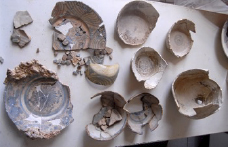
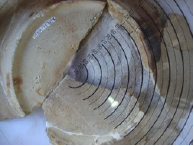
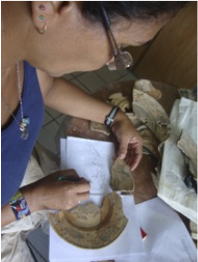
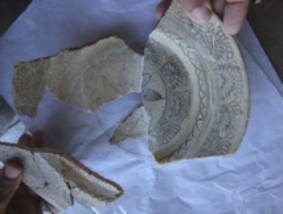
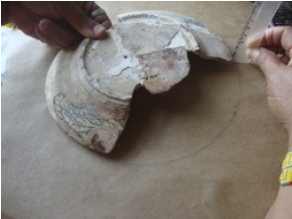
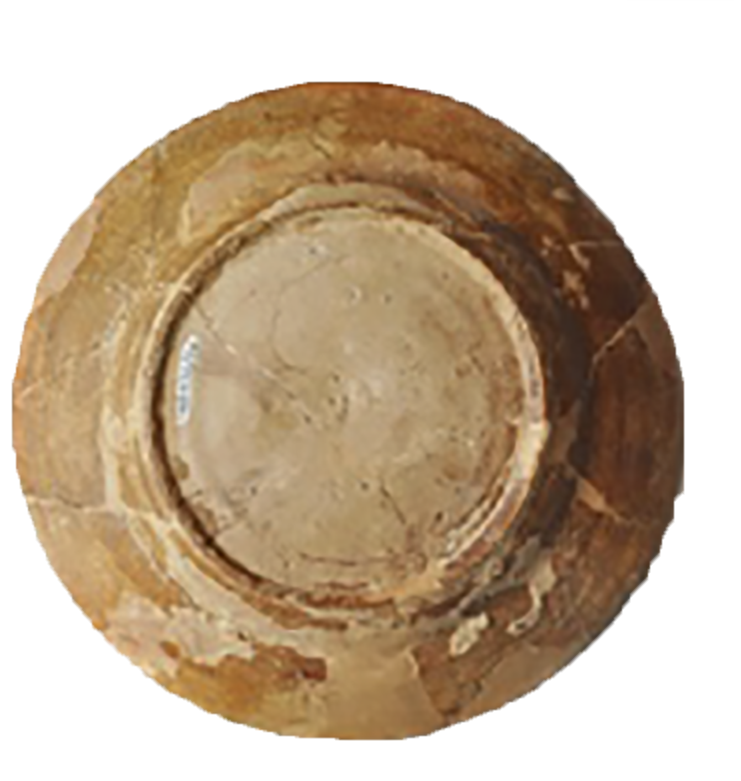
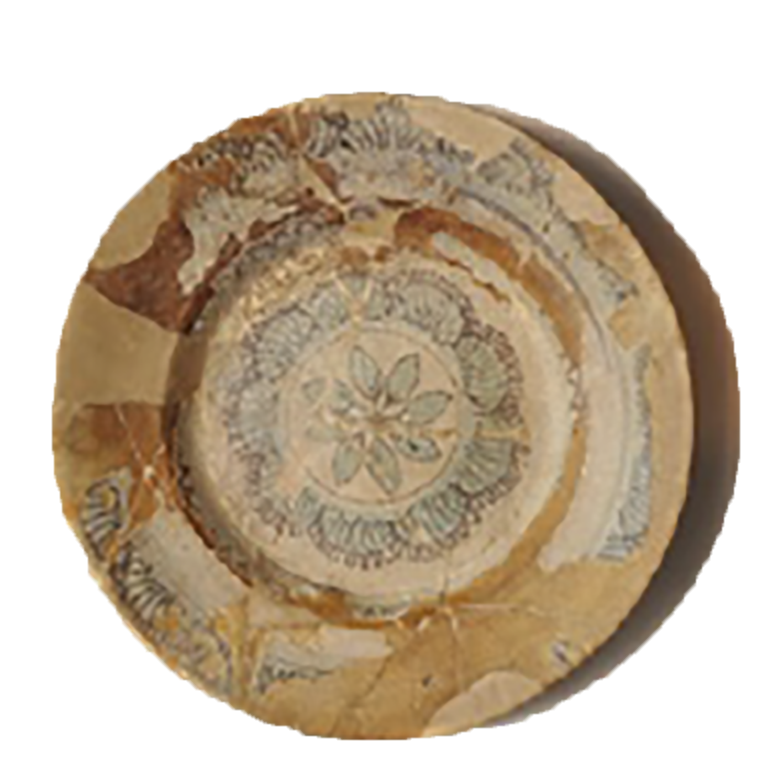
Etapas de reconstituição física de um objeto, para fins da restauração arqueológica.
Faiança ou louça vidrada, também conhecida como Maijólica teve sua primeira produção nas Ilhas Baleares, em Maiorca. Em 1460, Faenza, na Itália, se tornou o maior centro de produção desse tipo de louça, passando a fornecê-la junto com outros centros italianos para o resto da Europa, dando origem ao nome dessa louça vidrada e decorada de Faiança. Em Portugal, a produção da Faiança se deu primeiro em Lisboa e Coimbra em meados do séc. XVI e XVII. A forte influência do oriente sobre os povos europeus, principalmente Portugal, em suas relações comerciais, as primeiras produções da Faiança Portuguesa era inspirada os temas e desenhos que vinham do oriente. As peças de Faiança encontradas no Galeão Sacramento são peças raras desse período, com desenhos inspirados na louça chinesa e misturados aos temas nacionais como à dos “Aranhões”, Espirais”, “Rendas”, “Brasões” e dos “Símbolos”.
Esse tipo de decoração era reproduzido nos aparelhos de uso no reino e nas colônias.
Pieces in ceramics, terracotta, Chinese porcelain, Portuguese faience, glass, metal, and iron from the 17th and 18th centuries join the approximately fifteen thousand fragments existing in the Technical Reserve of the Museu Náutico da Bahia.
In this exhibit, represented by 17th century Portuguese faience pieces from the Galeão Sacramento archeological site and restored at the Museu Náutico da Bahia, we compose a panel of the several stages of restoration of underwater archeological pieces, from their meticulous identification and classification to the reconstitution of the missing parts.
This whole process was elaborated by a multidisciplinary team from the areas of museology, restoration, history, and plastic arts, guided by a careful laboratory research to support the interventions to be made regarding cleaning, gluing, and complementation, without ever altering the historical reading of the object after the intervention.
In this phase of the restoration process, represented here by some of the 125 reconstituted pieces, we studied a batch of 6,495 fragments that resulted in the gluing of 2,648 items. Another 87 pieces are in the process of being finalized.
The work developed by the Museu Náutico da Bahia aims to value and safeguard the heritage that is under its protection so that it perpetuates as a document that contributes to the knowledge of our history and promotes the strengthening of the Brazilian cultural identity.







Stages of physical reconstitution of an object, for the purposes of archaeological restoration.
Faience or glazed earthenware, also known as Maijólica was first produced in the Balearic Islands, in Majorca. In 1460, Faenza, Italy, became the largest center of production of this type of ware, supplying it along with other Italian centers to the rest of Europe, giving rise to the name of this glazed and decorated ware Faience. The production of Faience in Portugal started in Lisbon and Coimbra in the middle of the 16th and 17th centuries. The strong influence of the East on the European peoples, mainly Portugal, in their commercial relations, the first productions of Portuguese Faience were inspired by the themes and designs coming from the East. The Faience pieces found in Galeão Sacramento are rare pieces from this period, with designs inspired by Chinese tableware and mixed with national themes such as “Aranhões”, “Espirais”, “Rendas”, “Brasões” and “Símbolos”.
This type of decoration was reproduced on appliances for use in the kingdom and the colonies.
Translated with www.DeepL.com/Translator (free version)
Largo do Farol da Barra, s/n
Forte de Santo Antônio da Barra – Barra
Salvador – Bahia. CEP: 40140-650
E-mail: museu@museunauticodabahia.org.br
Copyright © 2021 – Museu Náutico da Bahia. Todos os direitos reservados.
Desenvolvido por Gato de Ap – Comunicação & Design
| Cookie | Duração | Descrição |
|---|---|---|
| cookielawinfo-checkbox-analytics | 11 months | This cookie is set by GDPR Cookie Consent plugin. The cookie is used to store the user consent for the cookies in the category "Analytics". |
| cookielawinfo-checkbox-functional | 11 months | The cookie is set by GDPR cookie consent to record the user consent for the cookies in the category "Functional". |
| cookielawinfo-checkbox-necessary | 11 months | This cookie is set by GDPR Cookie Consent plugin. The cookies is used to store the user consent for the cookies in the category "Necessary". |
| cookielawinfo-checkbox-others | 11 months | This cookie is set by GDPR Cookie Consent plugin. The cookie is used to store the user consent for the cookies in the category "Other. |
| cookielawinfo-checkbox-performance | 11 months | This cookie is set by GDPR Cookie Consent plugin. The cookie is used to store the user consent for the cookies in the category "Performance". |
| viewed_cookie_policy | 11 months | The cookie is set by the GDPR Cookie Consent plugin and is used to store whether or not user has consented to the use of cookies. It does not store any personal data. |
